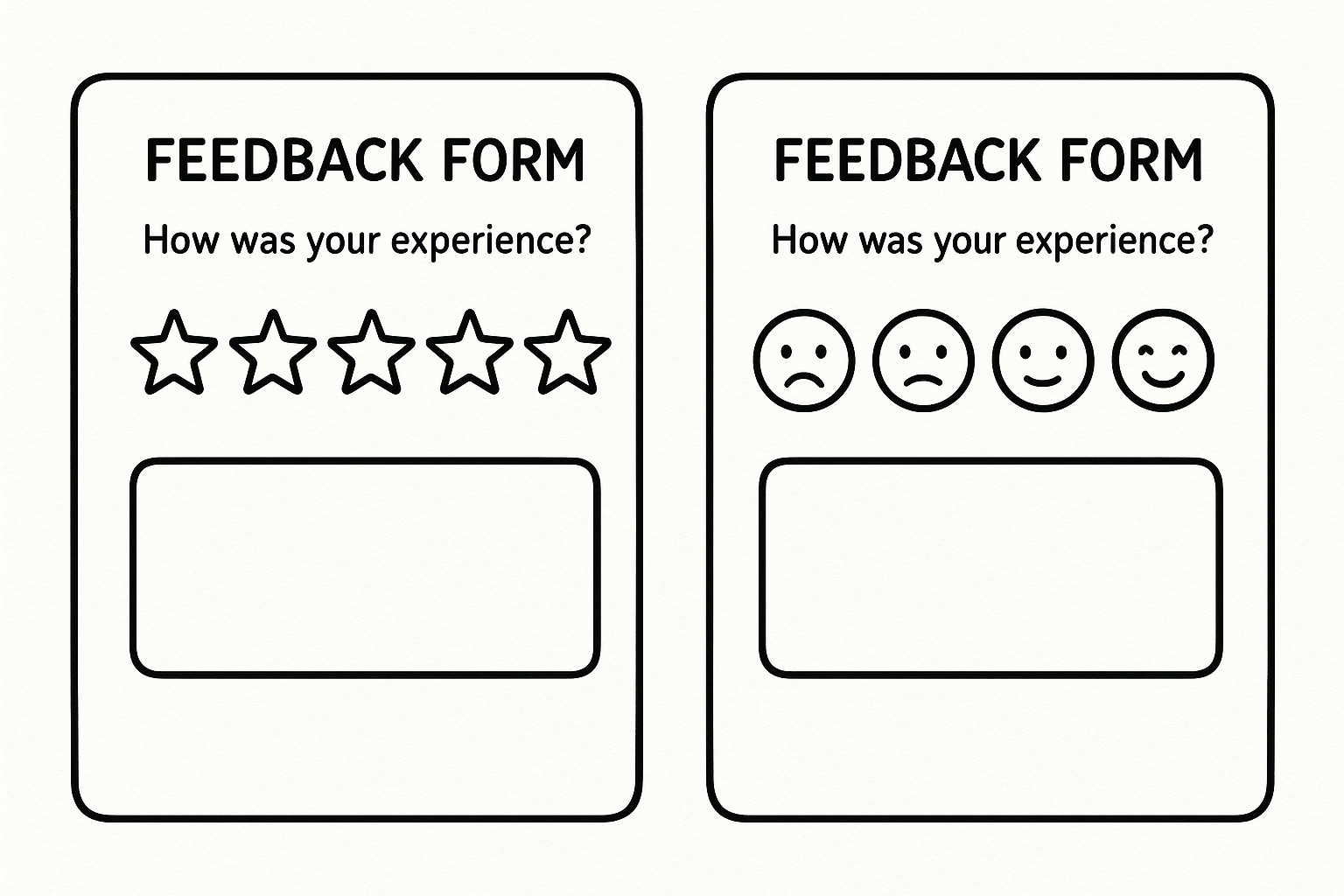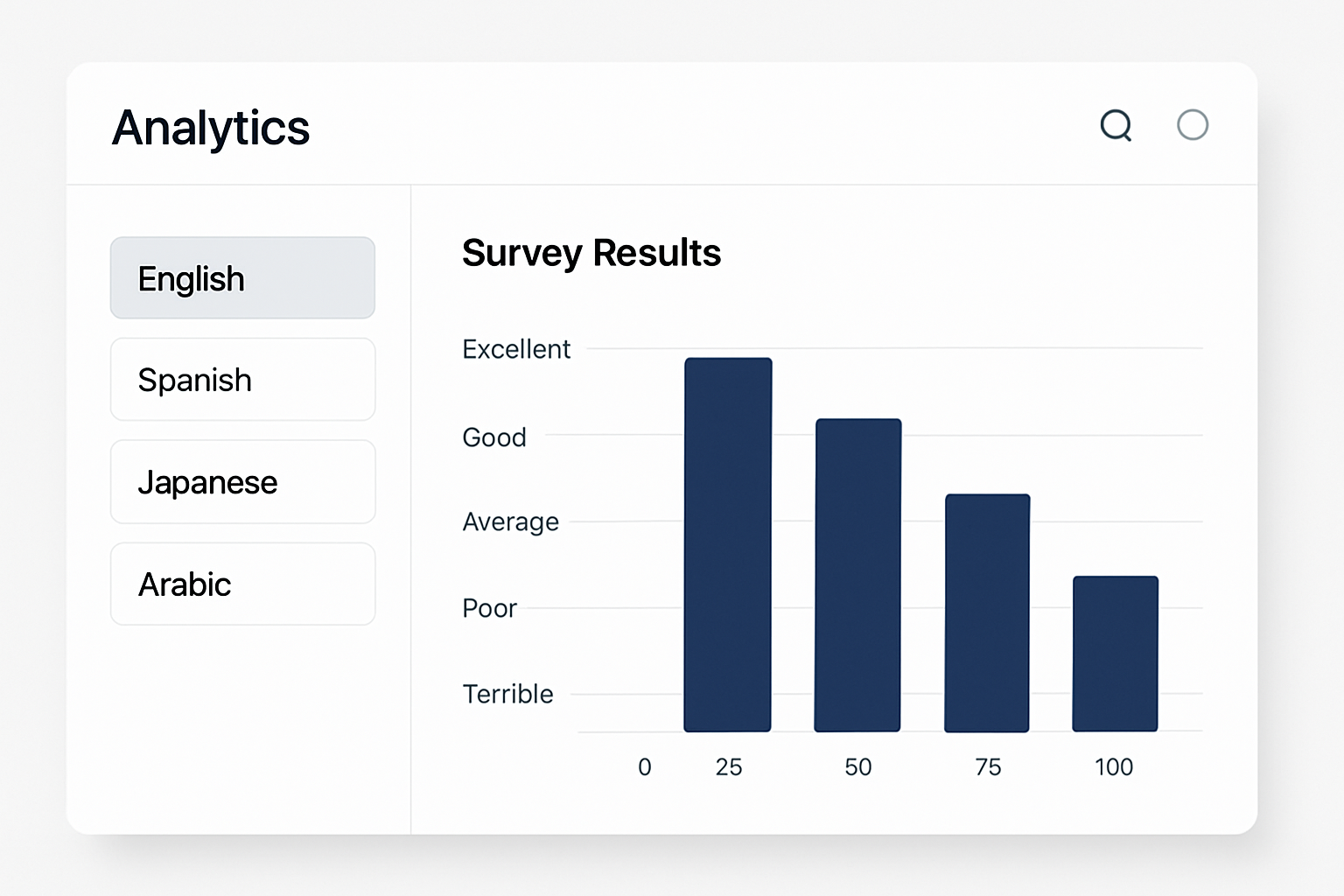Build Better Global Surveys: A No-Nonsense Guide
You've built a product you believe in, and you're ready to take on the world. But to conquer global markets, you need to understand them. That means collecting feedback, and not just from your English-speaking users. This is where the multilingual survey comes in—your passport to actionable global insights.
However, a poorly executed survey is worse than no survey at all. A simple mistranslation can turn a thoughtful question into a confusing or even offensive one, killing your credibility and response rates. According to a CSA Research study, a staggering 76% of online shoppers prefer to buy products with information in their native language. This preference doesn't just apply to sales pages; it's about respect and clarity in every interaction, including your feedback forms.
This guide is for the builders, the product managers, and the marketers who know that details matter. We'll skip the fluff and give you the battle-tested best practices for creating multilingual surveys that are clear, culturally aware, and easy to manage. We'll cover the pitfalls to avoid and the strategies that will help you gather authentic feedback from a global audience.

Table of Contents
- Why Most Multilingual Surveys Fail Before They Start
- The Right Way to Translate: Beyond "Copy-Paste"
- Cultural Nuances: The Details That Build Trust
- The Tech Stack: Choosing Tools That Don't Get in the Way
- Analyzing Global Data Without Losing Your Mind
- Your Next Steps to Global Feedback
1. The Foundation: Why Most Multilingual Surveys Fail Before They Start
The biggest mistake in creating a multilingual survey is starting with the translation. The real starting point is your source document. If your original questions are ambiguous, filled with jargon, or culturally specific, no amount of expert translation can save them.
Think of it like building a house. If the foundation is cracked, it doesn't matter how beautifully you paint the walls. The structure is compromised. Your source questions are that foundation.
Best Practices for Source Questions:
- Keep it Simple: Use clear, concise language. Avoid complex sentence structures.
- Instead of: "What aspects of our software's user interface do you find to be the most non-intuitive?"
- Try: "What is the most confusing part of our software?"
- Define Your Jargon: Every industry has its buzzwords. "Churn," "retention," "MRR"—these are not universal concepts. If you must use them, define them clearly within the survey itself.
- Avoid Idioms and Slang: Phrases like "bite the bullet" or "on the ball" are a translator's nightmare. They rarely have a direct equivalent and can lead to bizarre or nonsensical translations. I once saw a survey translate "beta tester" into something meaningless in Spanish, instantly losing credibility with a key user group. That's a mistake you only make once.
2. The Right Way to Translate: Beyond "Copy-Paste"
Tempted to just paste your questions into a free online translator? Don't. While AI has come a long way, it lacks the contextual and cultural understanding of a human expert. This is exactly why we built FormLink.ai's AI forms-to handle the structure with AI, so you can focus on the humanity of the content.
Translation Methods Ranked:
- Professional Translation + Review (The Gold Standard): Hire a professional translator who is a native speaker of the target language and, ideally, familiar with your industry. Then, have a second native speaker review the translation for tone and accuracy.
- Back-Translation (The Sanity Check): This is a powerful quality control method.
- Translate the survey from your source language (e.g., English) to the target language (e.g., Japanese).
- Have a different translator, who has not seen the original, translate it back from Japanese to English.
- Compare the back-translated English version with your original. If they match, your translation is likely accurate. If they don't, you've found a problem area to fix.
- Machine Translation + Human Review (The Budget-Conscious Approach): This can work if you're on a tight budget, but the "human review" part is non-negotiable. Use an AI tool for the initial pass, then have a native speaker clean it up. Never use the raw machine output.
3. Cultural Nuances: The Details That Build Trust
Respecting cultural differences is what separates a global-minded company from an amateur one. A survey that feels "foreign" or tone-deaf will be abandoned quickly.
- Imagery and Colors: The "thumbs-up" gesture is positive in the US, but offensive in parts of the Middle East. The color white is for weddings in the West, but funerals in some parts of Asia. Ensure your visuals and color schemes are culturally neutral or adapted for each region. For more on this, check out this guide to color theory across cultures.
- Formatting: Dates (DD/MM/YY vs. MM/DD/YY), currencies, and units of measurement must be localized. Forcing a user in Germany to enter a date in the American format is a small bit of friction that shows you haven't done your homework.
- Sensitive Questions: Questions about income, age, or marital status can be considered intrusive in some cultures. Consider making these optional or rephrasing them to be less direct.

4. The Tech Stack: Choosing Tools That Don't Get in the Way
As indie hackers, we know that every hour spent wrestling with a clunky tool is an hour not spent on building the product. Your survey tool shouldn't be part of the problem. While competitors charge you per response or require a computer science degree to set up, the right tool should feel like a natural extension of your workflow.
What to Look for in a Survey Tool:
- UTF-8 Support: This is a non-negotiable technical requirement. It ensures that characters from different languages (like Japanese, Arabic, or Russian) are displayed correctly.
- Right-to-Left (RTL) Support: For languages like Arabic and Hebrew, the entire interface needs to flip to an RTL layout. A tool that doesn't support this is a non-starter for surveying users in those regions.
- Easy Language Switching: The tool should make it simple for you to manage all language versions in one place and for the user to select their preferred language. With FormLink.ai, you can skip the tedious setup. Our conversational interfaces are designed to be global from the ground up. You can simply instruct the AI: "Add a Spanish and German version of this form," and it handles the rest.
5. Analyzing Global Data Without Losing Your Mind
You've successfully collected responses in five different languages. Now what? The challenge is to analyze this data without getting lost in a sea of spreadsheets and translation tabs.
This is where a unified analytics dashboard becomes critical. You need a system that can:
- Group Responses by Language: Easily filter and segment feedback from different regions.
- Translate Open-Ended Feedback: Provide high-quality, in-app translations for text responses so you can spot trends without leaving the platform.
- Aggregate Quantitative Data: Automatically combine multiple-choice and rating-scale answers from all languages into a single, unified report.
The breaking point for many teams is trying to manually merge CSV files. It's slow, error-prone, and simply doesn't scale. A modern platform should present all your data in one clean, actionable view.

Your Next Steps to Global Feedback
Creating a successful multilingual survey isn't about just translating words; it's about translating intent, respect, and usability. By starting with a solid foundation, choosing the right translation process, and paying close attention to cultural details, you can gather the authentic feedback you need to build a truly global product.
The goal is to make providing feedback as easy as having a conversation. Stop letting clunky forms and bad translations stand between you and your international users.
More Resources
- Harvard Business Review: 7 Best Practices for Writing Survey Questions
- Nielsen Norman Group: International User Research
- GALA (Globalization and Localization Association): Localization Best Practices